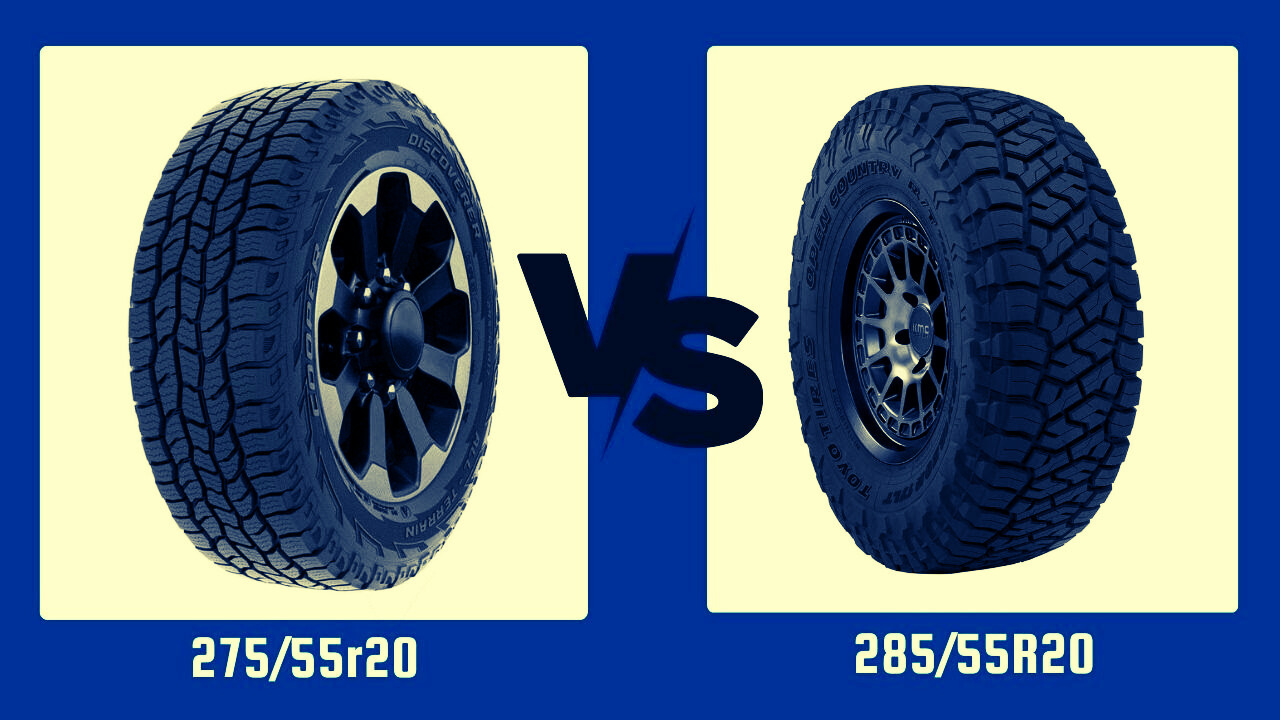Among the many aspects that need to be considered when selecting new tire for your vehicle, tire size turns out to be one of the most important, especially if you are using a truck, or an SUV. 285/55R20 and 275/55R20 tire sizes are among the most discussed ones among the drivers. They are the same in some ways as they come for 20-inch wheels but vary in several features, likely to affect performance, stability, fuel consumption, and comfort on the road. Here, these two tire sizes are explained with a focus on their features, strengths, and uses to help you select the right one for your driving needs.
Interpreting Tire Size
To begin with a comparison, it is crucial to know what the number and letters on a tire size represent.
· 285 or 275 indicates the width of the tire in millimeters.
· 55 is the aspect ratio, meaning that the height of the tire is 55% of the width.
· R stands for radial construction.
· 20 inches is the diameter of the wheels.
Now, let’s discuss 285/55R20 vs 275/55R20 and how their minor differences can affect performance.
Performance Comparison
Tire Contact Patch
· 285/55R20: 285mm width means a larger contact patch, which translates into more grip. This may be useful to the drivers who want more traction.
· 275/55R20: The 275mm width of this tire is slightly less than 285/55R20, but in some ways this can be beneficial: on paved roads it will give less rolling resistance, and thus better fuel economy.
Overall Diameter
· The overall dimension of the 285/55R20 is wider, giving slightly more clearance from the ground, and more grip especially on off-road terrain. This can be beneficial for drivers who prioritize traction.
· The slightly narrower 275 mm width of 275/55R20 tires offer less rolling resistance, which can improve fuel efficiency and provide a quieter ride on paved roads.
Load Carrying Capacity
· The wider 285/55R20 tires are somewhat more load-carrying as compared to the narrower tires, thus appropriate for utilising in hauling and towing.
· 275/55R20 tires are capable of supporting loads, however, the stability of tires with bigger load index may decrease.
Tire Applications
Driving Conditions
· If you often drive off-road or on a bad road, these 285/55R20 tires will be better for you especially on off-road terrain.
· When it comes to driving using the highways and city roads, the 275/55R20 gives a quiet ride compared to others on off-road terrain.
Winter and All-Season Use
· The wider 285/55R20 tires can perform well in snow and slushy conditions by providing more surface area for traction. Yet, they might not work well in heavy snow.
· The 275/55R20 tires should provide better deep snow traction because the tires grip the surface instead of pushing the snow aside.
Fuel Efficiency Considerations
· The 285/55R20, usually causes more rolling resistance and results in slightly less fuel efficiency.
· In the case of a preference for even more miles per gallon, then the 275/55R20 size has a slight edge.
Handling and Stability
· 285/55R20 tires give more grip on the road because they are wider and can improve traction and handling at high speeds.
· 275/55R20 tires have better handling which means that they are easy to control and give more responsiveness to steering, hence can be useful on urban roads where more precise and quick tire movement is required.
Cost Considerations
Larger tires like 285/55R20 are generally expensive because of the addition in the quantity of both rubber and material used. Further, they can result in higher cost when it comes to the maintenance because the price of fuel etc. will increase. As for the second, the 275/55R20 is less pricey and the tire’s lifetime could be longer because of lower rolling resistance level.
Pros and Cons Summary
285/55R20
275/55R20
Which One Should You Choose?
Choosing between 285/55R20 and 275/55R20 ultimately depends on your driving habits and vehicle usage.
Choose 285/55R20 if you often drive off-road, haul trailers or cargoes, or value stability and grip over fuel economy.
Choose 275/55R20 if you get comfort with a smooth, quiet ride, improved efficiency and better fitment with less or no adaptations.
In general, it will also be quite good for many drivers to reach a more meaningful middle ground between performance and comfort with 275/55R20. But if you require extra rigid characteristics or drive in rough circumstances, the 285/55R20 is also appropriate.
They are both good sizes, and the best way to determine which one will be more appropriate for your needs is understanding them. With the help of the information provided here, you can make an informed decision about the tire that suits best with your driving needs.
